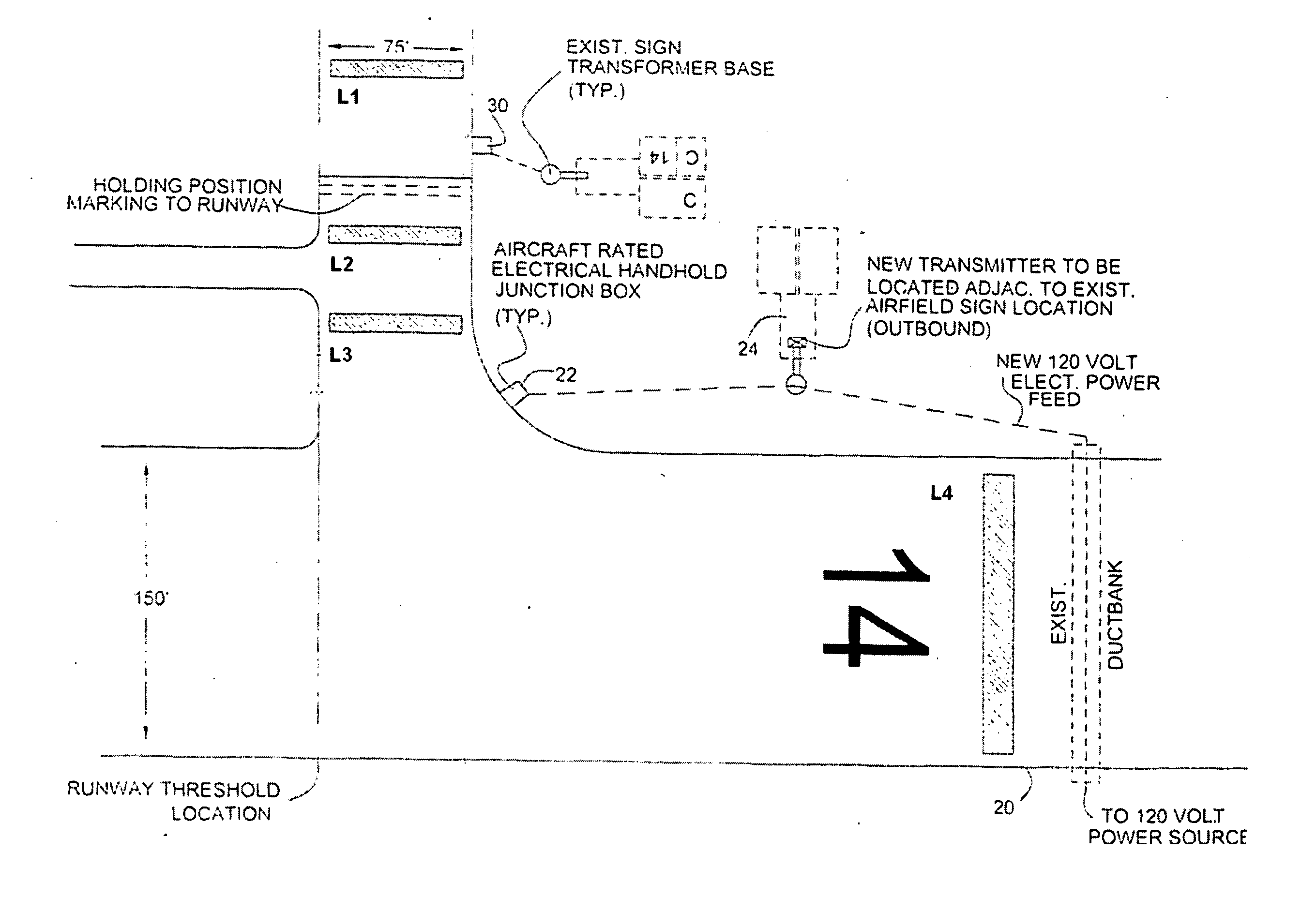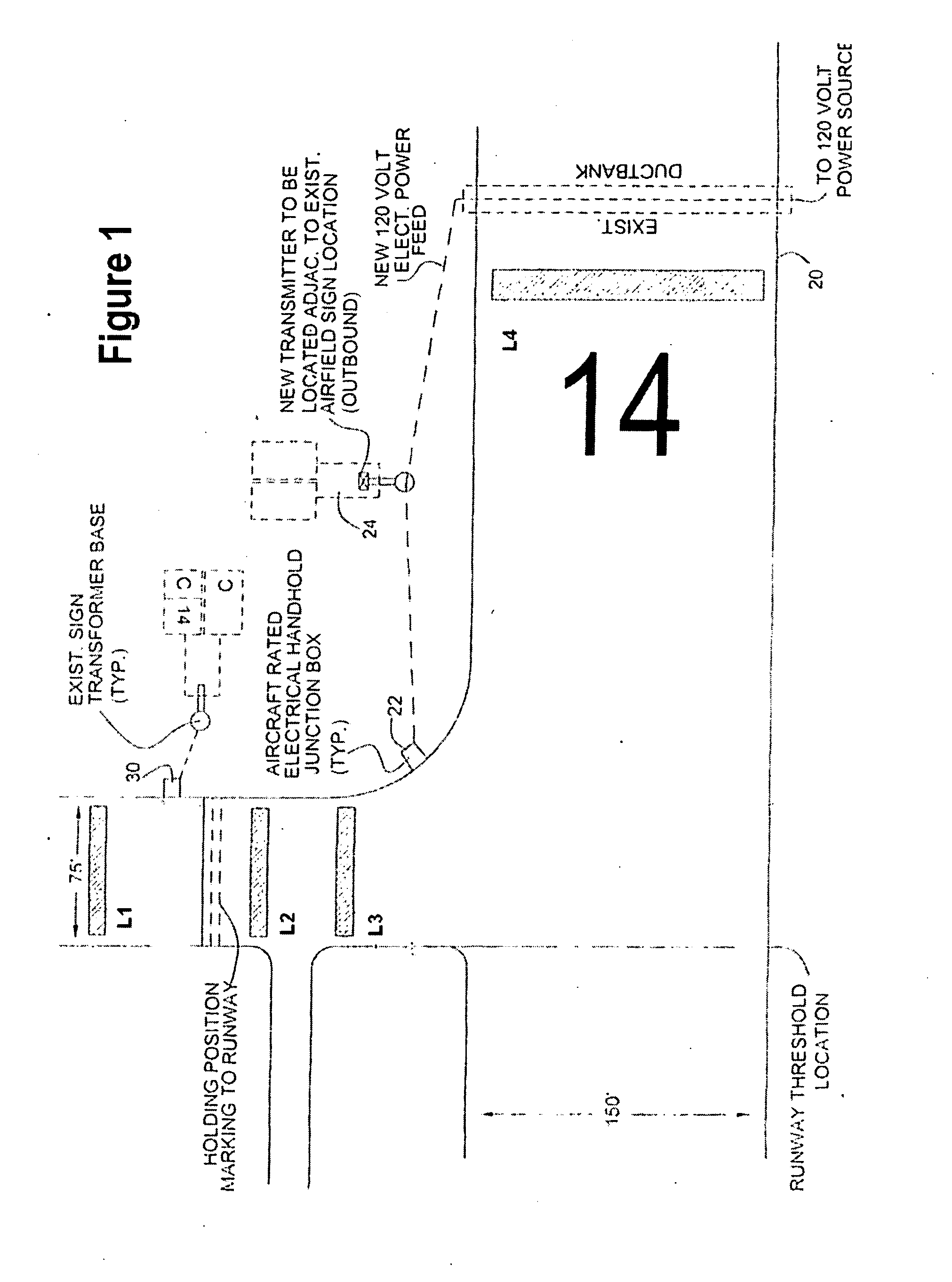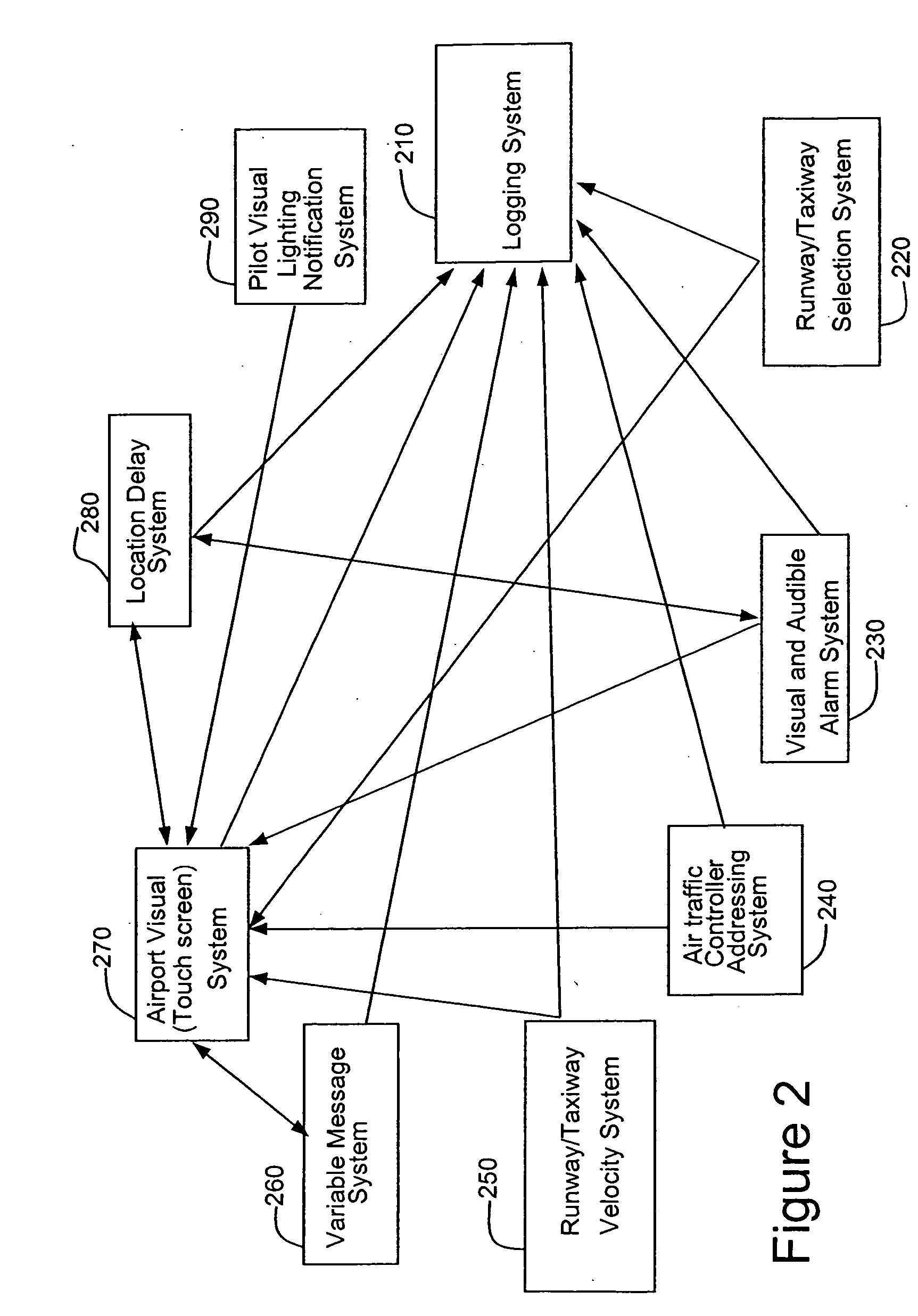System for monitoring vehicle and airplane traffic on airport runways
a technology for monitoring vehicles and airplanes, applied in the field of system for monitoring vehicles and airplane traffic on airport runways, can solve the problems of increasing air traffic, increasing aircraft incidents and accidents, and doubling the loss of these large aircraft, so as to reduce maintenance and repair costs and low cost
- Summary
- Abstract
- Description
- Claims
- Application Information
AI Technical Summary
Benefits of technology
Problems solved by technology
Method used
Image
Examples
example
[0087] Initial alert is set to 10 seconds and repetitive alert set to 30 seconds. Target breaches loop 1 at hold short zone; [0088] Visual trigger immediately activated with pulsing yellow icon; [0089] Audible alarm sounds 10 seconds after trigger; [0090] Repetitive alarm sounds 40 seconds after trigger and repeats at 30-second intervals until target clears zone.
Note: Both visual and audible alerts de-activate when exit trigger is breached.
[0091] An example of the pseudo-code to complete this monitoring process is illustrated in FIG. 12, although other code sequences can be used.
[0092] The controller also will have the capability to temporarily turn off all audible alerts with a “mute” button. However, to safeguard against distraction and forgetfulness, the mute feature is deactivated automatically after 30 seconds to serve as a safeguard. Only actions that are implemented via the GUI will be logged—not via external computer hardware adjustments. Therefore, volume adjustments ma...
PUM
 Login to View More
Login to View More Abstract
Description
Claims
Application Information
 Login to View More
Login to View More - R&D
- Intellectual Property
- Life Sciences
- Materials
- Tech Scout
- Unparalleled Data Quality
- Higher Quality Content
- 60% Fewer Hallucinations
Browse by: Latest US Patents, China's latest patents, Technical Efficacy Thesaurus, Application Domain, Technology Topic, Popular Technical Reports.
© 2025 PatSnap. All rights reserved.Legal|Privacy policy|Modern Slavery Act Transparency Statement|Sitemap|About US| Contact US: help@patsnap.com



